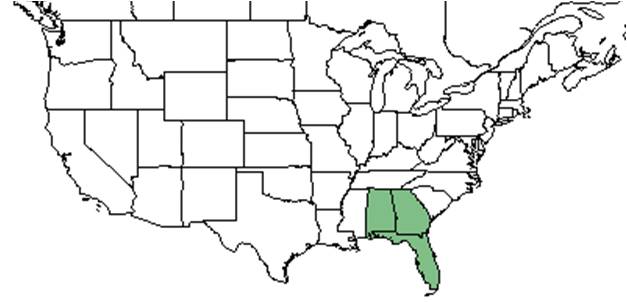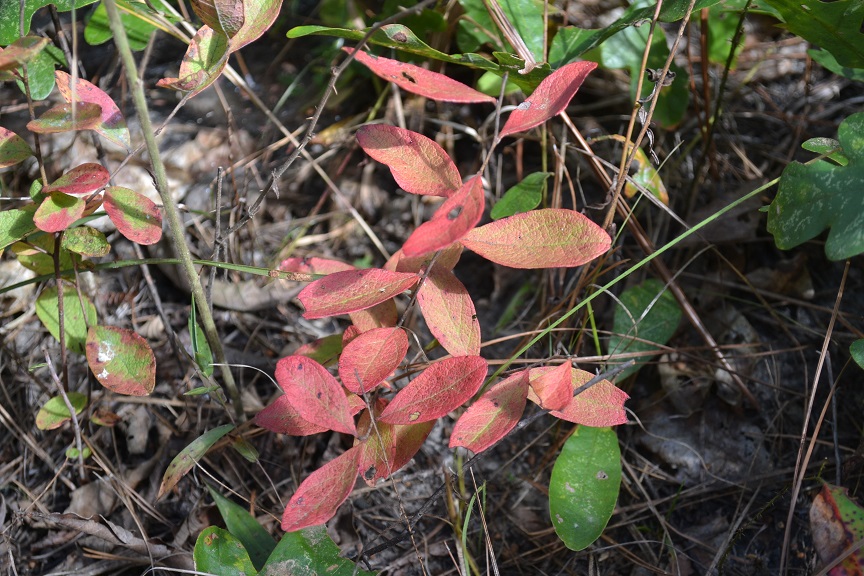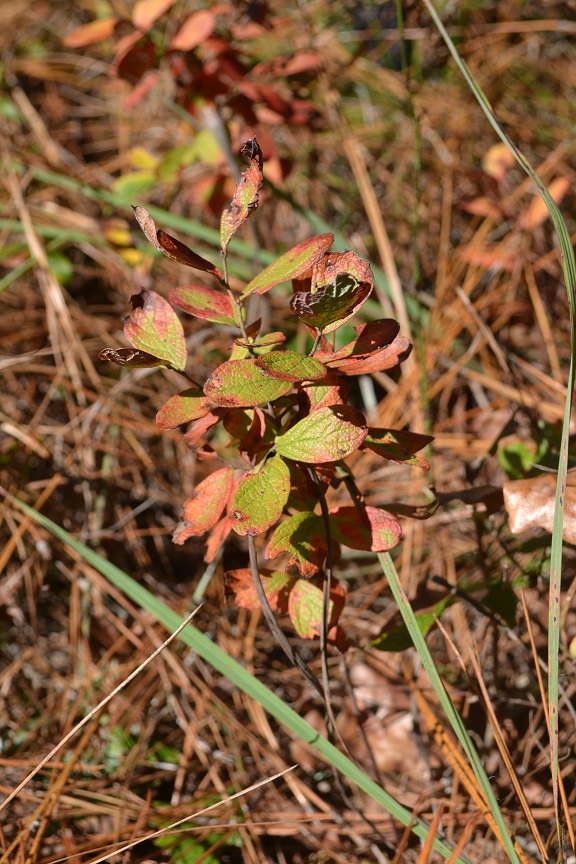Gaylussacia nana
Common name: Confederate huckleberry
| Gaylussacia nana | |
|---|---|

| |
| Photo taken by Kevin Robertson | |
| Scientific classification | |
| Kingdom: | Plantae |
| Division: | Magnoliophyta - Flowering plants |
| Class: | Magnoliopsida - Dicotyledons |
| Order: | Ericales |
| Family: | Ericaceae |
| Genus: | Gaylussacia |
| Species: | G. nana |
| Binomial name | |
| Gaylussacia nana (A. Gray) Small | |

| |
| Natural range of Gaylussacia nana from USDA NRCS Plants Database. | |
Contents
Taxonomic notes
Synonyms: Gaylussacia frondosa (Linnaeus) Torrey & A. Gray ex Torrey var. nana A. Gray; Decachaena nana (A. Gray) Small; G. frondosa (Linnaeus) Torrey & A. Gray ex Torrey var. tomentosa A. Gray
Description
Gaylussacia nana, also known as confederate huckleberry, is a perennial shrub that is a member of the Ericaceae family.[1]
Distribution
This species is generally restricted to the states of Florida, Georgia, and Alabama in the southeastern United States.[1] It is more specifically distributed within the southeast coastal plain from southeast South Carolina south to northern and central peninsular Florida, the Florida panhandle, west to eastern Louisiana, and disjunct in southeastern North Carolina.[2]
Ecology
Habitat
This species is commonly found in xeric sandhills in its native distribution.[2] It has been observed to grow in pine-scrub oak woodlands, open pinewoods and longleaf pinewoods, bordering a depression pond, boggy pine flatwoods, on mid-slopes of a ravine, a wet seepage bog, and other sandhill habitats. Soils it has been observed in include loamy sand, drying sand, and boggy soil.[3] It is a characteristic species of the upper panhandle savannas in Florida, being one of the more prevalent woody species in the habitat.[4]
Associated species includes Gaylussacia mosieri, Kalmia latifolia, Vaccinium darrowii, Sorghastrum elliottii, Quercus pumila, Pinus palustris, Pinus clausa, Sarracenia leucophylla, Calopogon barbatus, Drosera sp., and others.[3]
Phenology
G. nana has been observed to flower from March to May with peak inflorescence in April.[5] It has also been observed flowering in January, and has been observed fruiting in January, and April through June.[3]
Fire ecology
It grows in habitats that are frequently burned, where it has been collected from sites that were recently burned in longleaf pine savannas.[3]
Conservation and management
On the global scale, G. nana is listed as a G4 status due to its restricted distribution. It is also considered imperiled in Mississippi and critically imperiled in North Carolina.[6]
Cultivation and restoration
Photo Gallery
References and notes
- ↑ 1.0 1.1 USDA, NRCS. (2016). The PLANTS Database (http://plants.usda.gov, 17 May 2019). National Plant Data Team, Greensboro, NC 27401-4901 USA.
- ↑ 2.0 2.1 Weakley, A. S. (2015). Flora of the Southern and Mid-Atlantic States. Chapel Hill, NC, University of North Carolina Herbarium.
- ↑ 3.0 3.1 3.2 3.3 Florida State University Robert K. Godfrey Herbarium database. URL: http://herbarium.bio.fsu.edu. Last accessed: May 2019. Collectors: Loran C. Anderson, Robert K. Godfrey, Mike Jenkins, Lisa Keppner, R. Komarek, William Platt, and Annie Schmidt. States and Counties: Florida: Franklin, Jefferson, Leon, Liberty, Okaloosa, Wakulla, and Washington. Georgia: Thomas.
- ↑ Carr, S. C., et al. (2010). "A Vegetation Classification of Fire-Dependent Pinelands of Florida." Castanea 75(2): 153-189.
- ↑ Nelson, G. PanFlora: Plant data for the eastern United States with emphasis on the Southeastern Coastal Plains, Florida, and the Florida Panhandle. www.gilnelson.com/PanFlora/ Accessed: 9 DEC 2016
- ↑ [[1]] NatureServe Explorer. Accessed: May 17, 2019

